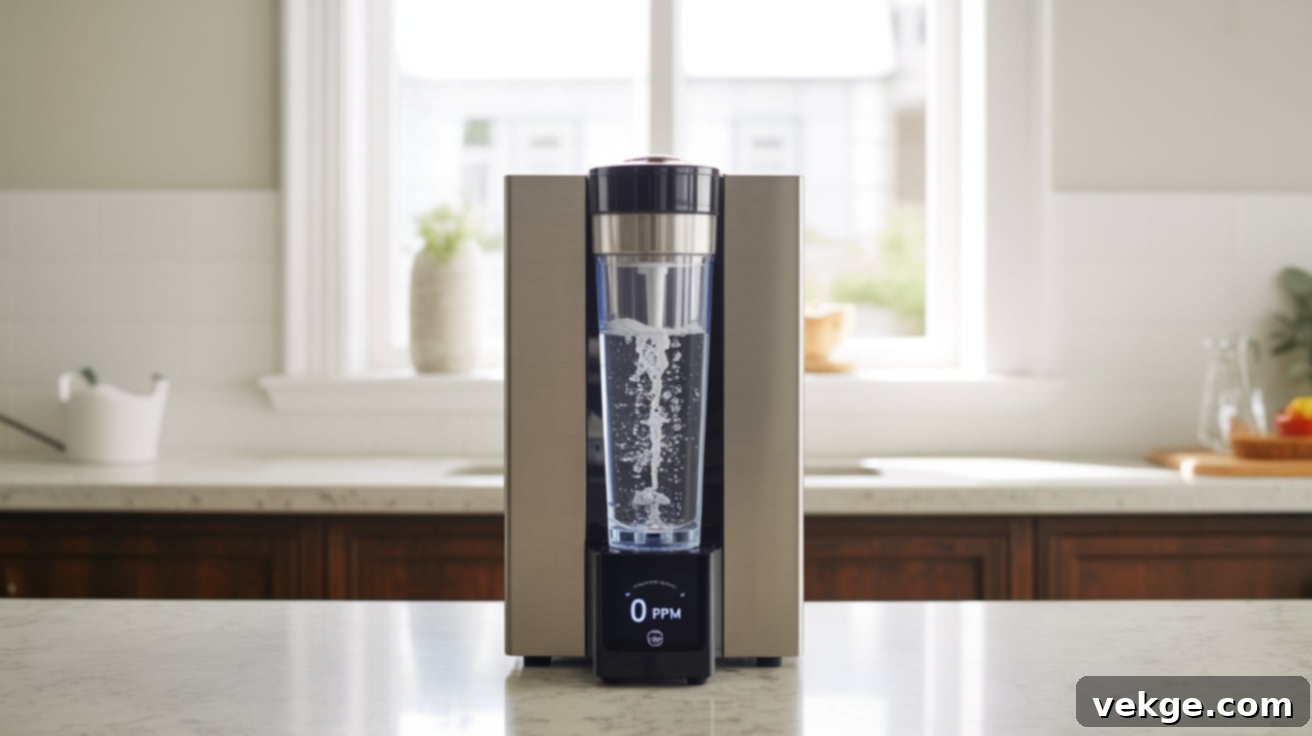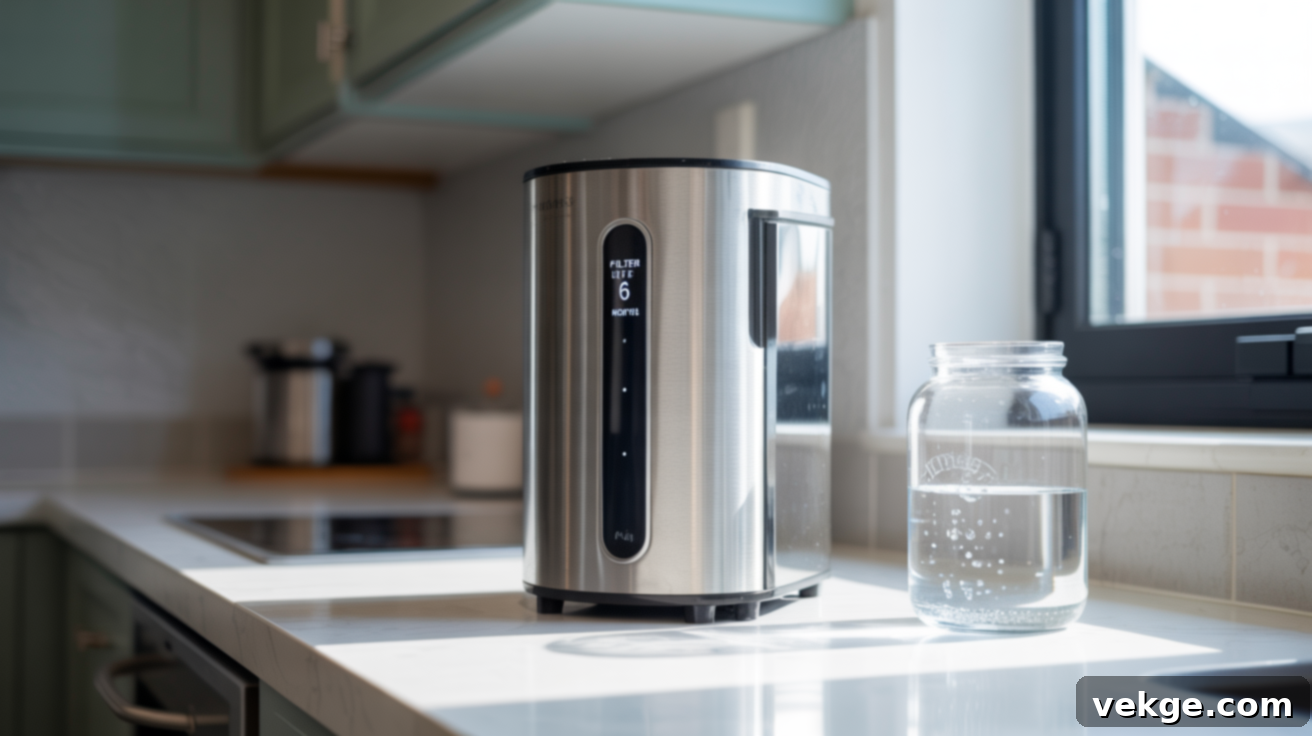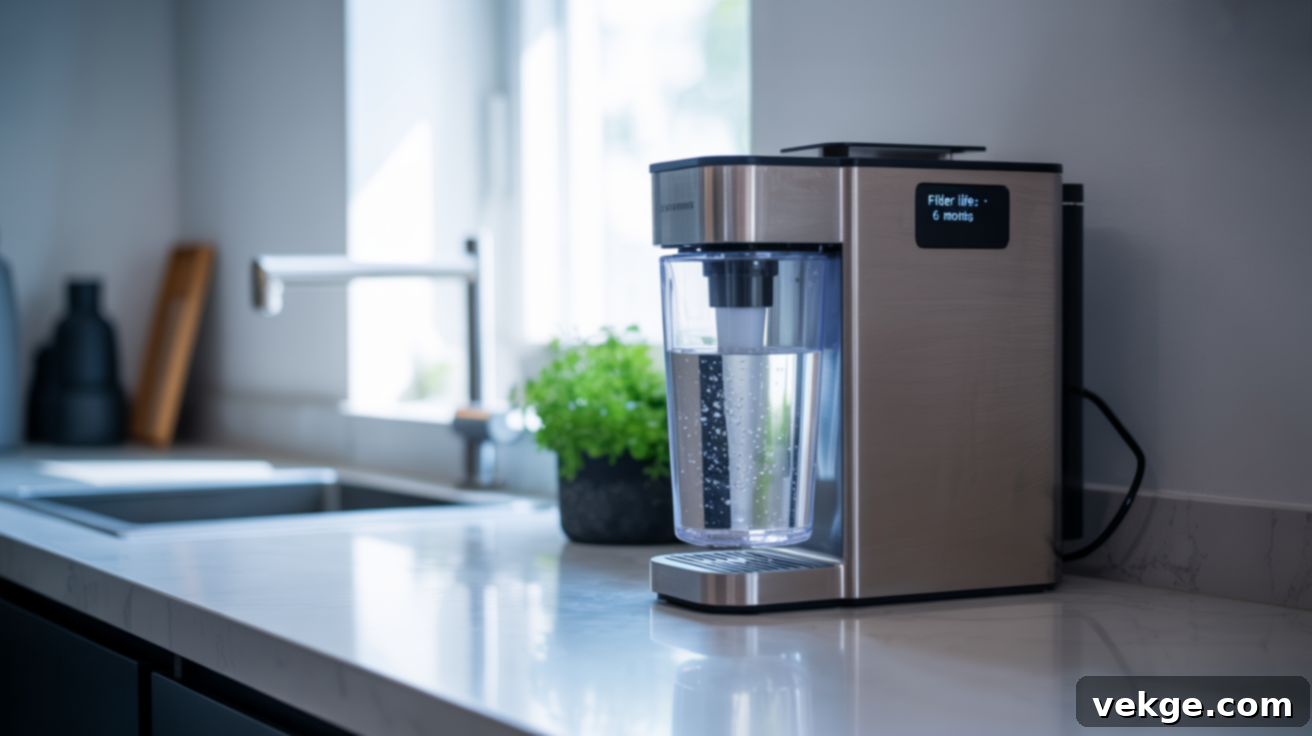The Essential Guide to Water Filter Replacement: Ensuring Clean Water & System Longevity
Replacing your water filter might not be the most exciting chore on your home maintenance list, but it’s undeniably one of the most critical. Establishing a consistent water filter replacement schedule is paramount to safeguarding your family’s health by providing truly clean drinking water, extending the life of your home’s plumbing, and ensuring your entire home water filter system operates at peak efficiency. Neglecting this simple task can lead to a cascade of problems, from diminished water quality to costly system repairs.
In this comprehensive guide, we’ll delve deep into why staying on top of your filter maintenance is an absolute necessity. We’ll explore the various types of filters, their typical lifespans, the tell-tale signs that indicate it’s time for a change, and the significant risks you face if you delay this vital upkeep. By the end, you’ll have a clear roadmap to maintaining a healthy and efficient water filtration system.
Understanding Water Filter Lifespan: How Long Do Different Filters Last?
Every water filter is designed with a specific operational lifespan, which can vary significantly based on its type, the overall quality of the water in your area, and your household’s daily water consumption. Understanding these durations is key to proactive maintenance and ensuring continuous filtration.
- Carbon Block Filters: Typically last 3–6 months. These filters are excellent at removing chlorine, sediment, volatile organic compounds (VOCs), and other contaminants that affect taste and odor.
- Sediment Filters: Generally require replacement every 3–6 months. Their primary role is to trap larger particles like dirt, rust, and sand, protecting subsequent filters from premature clogging.
- Granular Activated Carbon (GAC) Filters: Often last around 6 months. Similar to carbon blocks, GAC filters are effective at improving water taste and odor by absorbing chlorine and organic chemicals.
- Reverse Osmosis (RO) Membranes: These are the heart of an RO system and boast a longer lifespan, typically 2–3 years, depending on the quality of the incoming water and pre-filter maintenance.
- Inline Filters: Commonly found in refrigerators or ice makers, these usually last for 6–12 months, providing filtration for specific appliances.
- Shower and Faucet Filters: Due to their smaller size and direct exposure, these generally need changing every 3–6 months to maintain effectiveness against chlorine and sediment that can affect skin and hair.
Failing to perform timely filter cartridge replacement can result in significant issues, including severe clogging that impedes water flow, an unpleasant taste or odor returning to your water, and, most importantly, unfiltered or poorly filtered water reaching your tap, compromising its safety and quality.
Clear Signs It’s Time to Replace Your Water Filter
You shouldn’t wait for your filtration system to completely fail before considering a replacement. Being aware of the following clear indicators can help you proactively maintain your system and ensure consistent access to clean water. These signs tell you it’s definitively time to replace water filter components:
- Water Tastes or Smells Bad: This is often the most obvious sign. If your water starts to taste metallic, like chlorine, earthy, or develops a noticeable sulfurous smell, it’s a strong signal that your filter’s ability to remove contaminants has been exhausted. An old filter can no longer trap these substances, allowing them to pass through into your drinking supply.
- Drop in Water Pressure: A noticeable reduction in the flow of water from your taps is a common symptom of a clogged filter. Over time, sediment, rust, and other contaminants accumulate within the filter media, creating a physical barrier that restricts water flow. This not only indicates a compromised filter but can also put strain on your plumbing system.
- Cloudy or Discolored Water: If your tap water appears cloudy, milky, or has a visible tint (such as brown, yellow, or rusty), it’s a major red flag. This indicates that the filter is no longer effectively removing suspended particles and sediments, allowing them to pass directly into your water supply. Your filter has essentially stopped working.
- Visible Buildup or Slime on the Cartridge: While you may not regularly inspect your filters, if you do, visible signs of biological growth (like slime or mold) or rust on the filter cartridge itself are clear indicators of an expired and compromised filter. This buildup can not only block water flow but potentially harbor bacteria.
- Filter Replacement Indicator: Many modern water filtration systems, especially those for refrigerators, pitchers, or whole-house units, come equipped with built-in alerts. These can be simple light indicators that change color (e.g., green to red), digital displays, or even smart system app notifications. Always trust and act on these indicators, as they are calibrated to your filter’s expected lifespan.
While these signs are excellent general guidelines, it is always best practice to refer to the user manual for your specific unit. The manufacturer’s recommendations for filter cartridge replacement intervals are tailored to your system’s design and filter types, providing the most accurate guidance.
The Hidden Dangers of Neglecting Water Filter Replacement

Overlooking your scheduled water filter replacement might seem like a minor oversight, but its consequences can be far more detrimental than you might imagine. The risks extend beyond mere inconvenience, impacting your health, your home, and your wallet.
- Contaminated Water & Health Risks: This is arguably the most critical danger. An old, saturated filter loses its ability to trap harmful substances. Instead of purifying, it can become a breeding ground for bacteria or even start to leach previously trapped contaminants back into your water. This means your family could be unknowingly consuming chlorine, lead, volatile organic compounds (VOCs), pesticides, herbicides, bacteria, viruses, or even microplastics that the filter was once designed to remove. These contaminants pose serious short-term and long-term health risks, from gastrointestinal issues to more severe chronic diseases.
- Reduced Water Quality & Taste: As filters degrade, they not only stop filtering effectively but can actually begin to impart unpleasant tastes and odors back into your water. This process, known as ‘leaching,’ happens when the filter media breaks down or becomes so saturated that it releases trapped particles and chemicals. The clean, crisp taste you expect from filtered water will disappear, replaced by metallic, chemical, or earthy flavors, making your water less appealing and potentially unsafe.
- Damaged Filtration System & Plumbing: An overused and clogged filter restricts water flow, forcing your filtration system and potentially your home’s entire plumbing to work harder to push water through. This increased strain can lead to a host of problems, including:
- Leaks: Increased pressure can cause seals to break or housings to crack, leading to leaks that can damage your cabinets, floors, and walls.
- System Failure: Pumps in whole-house or reverse osmosis systems can burn out due to overexertion, leading to expensive repairs or the need for a complete system replacement.
- Shortened Appliance Lifespan: Appliances that rely on filtered water (like ice makers, dishwashers, and coffee machines) will be exposed to unfiltered water and sediment, leading to premature wear and tear, blockages, and reduced efficiency.
- Increased Costs & Inefficiency: Delaying maintenance doesn’t save money; it often leads to greater expenses.
- Costly Plumbing Repairs: Damages caused by leaks or system failures can result in significant repair bills for your filtration unit or even your home’s general plumbing.
- Higher Energy Bills: If your filtration system (especially whole-house or RO systems) has to work harder due to clogged filters, it will consume more energy, leading to higher electricity bills.
- Frequent Appliance Replacements: Appliances damaged by unfiltered water will need to be repaired or replaced more often.
- Medical Expenses: Ingesting contaminated water can lead to health issues that require medical attention, adding another layer of unforeseen costs.
A timely water filter replacement isn’t just a routine maintenance task; it’s a critical investment in your family’s health, your home’s infrastructure, and your long-term financial well-being. It’s truly a form of protection that pays dividends.
Tailoring Your Schedule: How Often to Replace Water Filter by System Type
Different water filtration systems are designed to address specific needs and operate differently, meaning their filter replacement schedules will vary. Understanding the nuances of your particular setup is crucial for optimizing replacement timing and ensuring maximum effectiveness.
Under-Sink Water Filters
These compact systems are popular for providing targeted filtration for drinking and cooking water directly from a dedicated faucet or existing cold water line. Under-sink filters typically utilize carbon block or sediment cartridges. For most models, these filters need changing every 6 months. Some advanced under-sink systems may include an additional post-filter for taste and odor refinement, which often has an annual replacement cycle. Always check your specific model’s manual for precise guidelines, as factors like local water quality (e.g., high sediment levels) can necessitate more frequent changes.
Whole-House Water Filtration Systems
A whole-house water filter system is designed to treat all the water entering your home, protecting every tap and appliance. These systems often employ a multi-stage approach, combining various filter types. Sediment filters, which act as the first line of defense, usually last 3–6 months. Carbon cartridges, which remove chlorine, chemicals, and improve taste/odor throughout your home, typically function for 6–12 months. The exact duration depends heavily on your household’s water consumption and the specific contaminants present in your source water.
Reverse Osmosis (RO) Systems
A multi-stage reverse osmosis system provides superior water purification, but it demands a staggered maintenance approach for its various components to ensure optimal performance and longevity of the delicate RO membrane:
- Sediment Pre-filter: This filter protects the carbon filters and the RO membrane from larger particles like dirt and rust. It needs replacement every 6 months. Neglecting this can prematurely clog subsequent filters.
- Carbon Pre-filter(s): These filters remove chlorine and chloramines, which can damage the RO membrane. They typically require replacement every 6–12 months.
- RO Membrane: The core component of the system, responsible for removing dissolved solids and microscopic impurities. This is the longest-lasting component, usually requiring replacement every 2–3 years. Its lifespan is directly tied to the effectiveness of the pre-filters.
- Post-filter (GAC/Carbon Block): This final filter polishes the water, removing any lingering tastes or odors before it reaches your tap. It should be replaced annually.
Strictly adhering to a diligent reverse osmosis system maintenance plan is crucial for preserving the ultra-pure quality of your drinking water and extending the life of your entire system.
Shower and Faucet Filters
While not providing drinking water filtration, these point-of-use filters offer specific benefits, such as reducing chlorine exposure in showers (beneficial for skin and hair health) or improving the taste of water directly from a kitchen faucet for specific uses. Due to their smaller size and constant exposure, these filters generally have a shorter lifespan, often requiring replacement every 3–6 months. Their effectiveness diminishes quickly once the filter media is saturated.
Setting Up Your Foolproof Water Filter Replacement Schedule
Proactive scheduling is the simplest way to avoid the pitfalls of neglected filter maintenance. By establishing a clear plan, you’ll ensure your water is always clean and your system remains healthy. Here’s how to create a foolproof schedule:
- Read the User Manual Thoroughly: This is your primary resource. Every water filter system is unique, and its manual will provide the manufacturer’s recommended replacement intervals for each specific part. Adhering to these guidelines is crucial for optimal performance, warranty validity, and preventing premature system wear. Don’t guess; consult the experts.
- Mark Your Calendar with Recurring Reminders: Immediately after installing a new filter, set reminders. Utilize digital tools like your phone’s calendar, Google Calendar, or dedicated reminder apps for recurring alerts. Alternatively, a physical wall calendar in a visible spot can serve as a great visual cue. Set reminders a week or two before the due date to give yourself time to order new cartridges.
- Monitor Your Household’s Water Usage: The manufacturer’s recommended intervals are often based on average household usage. If you have a larger family, frequently use water-intensive appliances, or live in an area with particularly hard or sediment-rich water, you may need to replace filters more frequently. Pay attention to the signs of a failing filter even before your scheduled date.
- Buy Replacement Cartridges in Bulk: Keeping a few spare cartridges on hand ensures you’re always ready when it’s time for a change. Buying in bulk can also often save you money and prevent delays if a specific filter type is temporarily out of stock. Store them in a cool, dry place away from direct sunlight.
You can find quality water filter replacement cartridges compatible with most systems online, making reordering hassle-free and ensuring you never run out when a change is due.
Practical Tips for Easy and Timely Filter Changes

Changing water filters doesn’t have to be a dreaded chore. With a few simple organizational tips and proactive habits, you can make the process quick, clean, and stress-free. These strategies will help ensure you maintain your system efficiently and on schedule:
- Label Each Filter with the Install Date and Next Change Date: Use a permanent marker directly on the filter housing or a waterproof sticker. Include the date of installation and the projected date for the next replacement. This simple visual cue makes it incredibly easy to track each filter’s age at a glance, especially in multi-stage systems.
- Keep Instructions and Necessary Tools Nearby: Store your system’s user manual, any specialized wrenches, and a small towel in a designated spot close to your filter system. This prevents frantic searches when it’s time for a change and ensures you have all the information and equipment needed for a smooth swap.
- Use Color-Coded Markers or Stickers for Different Filters: If your system uses multiple types of filters with varying lifespans (like an RO system), assign a color to each type. For example, blue for sediment, green for carbon, red for the membrane. This visual system helps you quickly identify which filter needs replacing and when, reducing confusion.
- Sign Up for Subscription Deliveries: Many filter manufacturers and retailers offer auto-ship or subscription services for replacement cartridges. This convenient option ensures that new filters arrive at your doorstep exactly when you need them, so you never run out and are always prepared for a scheduled change.
- Check Water Pressure Regularly: Make it a habit to periodically observe your home’s water pressure. A noticeable or gradual drop in pressure throughout your home, or at a specific filtered tap, is one of the earliest and most reliable indicators that your filter is clogging up and it’s time for a filter cartridge replacement.
- Take Advantage of Smart Systems and App Alerts: For those with high-end or smart water filtration systems, leverage their technological features. Many models come with Wi-Fi connectivity, allowing you to monitor filter life via an app, receive automatic alerts when a replacement is due, or even order new filters directly from your phone.
- Prepare for the Change: Before you begin, ensure you have a bucket and towels handy to catch any drips, and know how to properly shut off the water supply to your system. A little preparation goes a long way in preventing messes.
- Sanitize Filter Housings: When changing filters, it’s a good practice to quickly clean the inside of the filter housings with a mild bleach solution or food-grade sanitizer. This helps prevent the buildup of bacteria and ensures a truly clean start with the new filter.
Final Thoughts: Invest in Your Health and Home with Timely Filter Changes
Ignoring your water filter replacement schedule is a gamble that carries significant risks, potentially jeopardizing your home’s water quality, causing expensive damage to your filtration system, and ultimately costing you more money in the long run. Whether you’re diligently maintaining an under-sink filter, a sophisticated reverse osmosis system, or a comprehensive whole-house water filter, consistency in maintenance is the undeniable key to success.
By staying proactive, organized, and attentive to the signs your system provides, you’ll ensure that every glass of water your family drinks is consistently clean, safe, and refreshingly pure. Don’t wait for visible signs of failure or a sudden drop in water quality. Instead, set a clear maintenance plan, commit to sticking to it, and enjoy the unparalleled peace of mind that comes from knowing your water is filtered precisely the way it should be. Your health, your plumbing, and your wallet will thank you for it.
